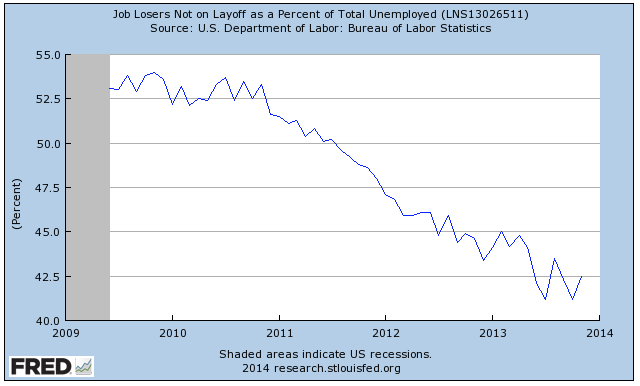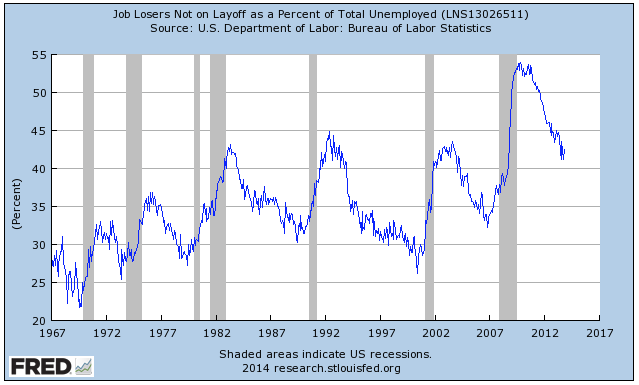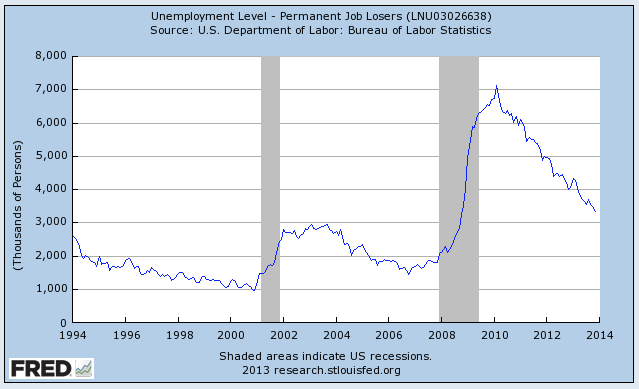There is an interesting employment metric that is rarely discussed; job losers not on layoff as a percentage of total unemployed.
Here is a graph from FRED showing how this metric has improved since the end of the Great Recession in June 2009:

At its post-recession peak, 54 percent of unemployed Americans that had lost their jobs had not been laid off. This has dropped substantially over the last four years to its current level of 42.5 percent, a decrease of 11.5 percentage points or 21.3 percent. There is no doubt that the selected statistics show that the health of the jobs market in America has improved markedly.
As I'm prone to do, to help us put the present into historical context, here is a look at the longer term data going all the way back to 1967:

You can clearly see that, while the current improvement is substantial, the percentage of unemployed American workers that are not on layoff is still at very elevated levels.
Over the 46 year period, the average percentage of unemployed workers that were not on layoff was only 36.6 percent, 5.9 percentage points lower than the current rate. In fact, out of the 563 data points in the FRED database, the current level is the 80th worst on record. Not surprisingly, the worst level in the past 46 years of 54 percent was reached in November 2011, the post-Great Recession peak that I noted above.
As well, we should note that since the late 1960s and in particular since the recession of 2001, the percentage of job losers that are not on layoff has been rising. Back in the 1960s, generally less than 30 percent of unemployed Americans were job losers that had not been laid off. This has steadily risen; in fact, the last time that the rate was below 30 percent was in June 2000 when the rate dropped below 30 percent for a very short period of time, hitting a low of 26.2 percent.
What does all of this mean? According to Richard Butler, the author of the "Economics of Social Insurance and Employee Benefits", job losers that are not on layoff find themselves in that unenviable position because of structural changes in the economy. These workers have little hope of regaining their lost jobs. This can be compared to job losers who are on layoff; these workers expect their unemployment to be of relatively short duration and anticipate that they will be called back to work at some point in the near future.
To summarize, perhaps a graph from FRED can explain how severe the problem still is for a great number of the jobless in America:

Four and a half years into this "recovery" and there are still 3.329 million Americans that have permanently lost their jobs, up 132.1 percent from a pre-Great Recession low of 1.434 million and more that triple the roughly 1 million Americans who had permanently lost their jobs at the turn of the new millennium.
Perhaps this data explains why there is such a dichotomy in the American economy today. Millions of permanently dismissed workers have an overwhelming sense of helplessness and hopelessness as they come to the grim realization that their jobs are gone forever.
Click HERE to read more of Glen Asher's columns
You can publish this article on your website as long as you provide a link back to this page.

Be the first to comment